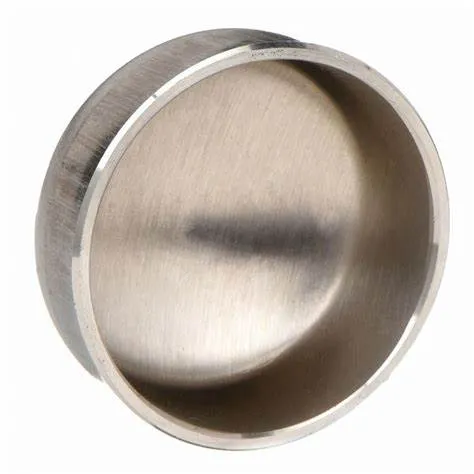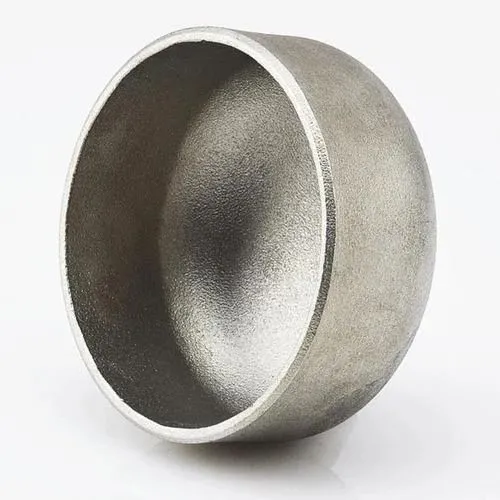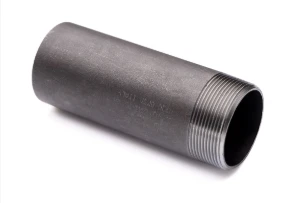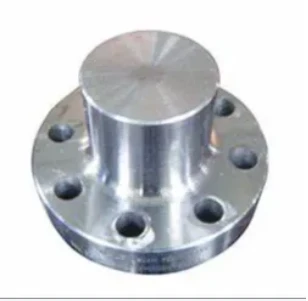JIS B2311 Matsayin Masana'antar Jafananci ne wanda ke rufe kayan aikin bututun walda, gami da iyakoki da ake amfani da su a cikin tsarin bututu. Hulun walda na butt suna aiki da manufar rufe ƙarshen bututu, suna ba da hatimi don hana yaɗuwa ko gurɓatawa. Anan akwai gabatarwar JIS B2311 madaurin walda:
- 1. JIS B2311 Standard:
- - Ma'aunin JIS B2311 yana ƙayyadad da buƙatun ƙira, girma, kayan, masana'anta, da gwajin kayan aikin walda, gami da iyakoki, a cikin tsarin bututu.
- - Ma'auni yana tabbatar da cewa iyakoki da aka samar bisa ga ka'idodin JIS sun cika ka'idoji masu inganci kuma sun dace da sauran kayan aikin bututu.
- 2. Hulba-Welding:
- - Hul ɗin walda na butt, bisa ga JIS B2311, dacewa ce da aka ƙera don rufewa da rufe ƙarshen bututu amintacce, yana ba da kariya da kiyaye amincin tsarin bututun.
- - Ana amfani da iyakoki a cikin yanayi inda ƙarshen bututu yana buƙatar rufewa, ko dai na dindindin ko na ɗan lokaci, don hana yaɗuwa, gurɓatawa, ko don samar da ƙarewa ga tsarin.
- 3. Kaya da Gina:
- - Butt-welding iyakoki karkashin JIS B2311 dalla-dalla suna samuwa a cikin daban-daban kayan kamar carbon karfe, bakin karfe, da gami karfe don saduwa daban-daban aikace-aikace bukatun.
- - Ana ƙera waɗannan filaye ta amfani da daidaitattun hanyoyin gini don tabbatar da haɗin gwiwa mai ƙarfi kuma mara ɗigo lokacin walda zuwa ƙarshen bututu.
- 4. Aikace-aikace da Fa'idodi:
- - Abubuwan walda na butt suna samun aikace-aikace a masana'antu daban-daban, gami da mai da iskar gas, hanyoyin sarrafa sinadarai, masana'antar sarrafa ruwa, da ƙari inda ake buƙatar rufe ƙarshen bututun cikin aminci.
- - Caps suna ba da kariya ga ƙarshen bututu daga abubuwan muhalli, hana gurɓatawa, da kuma taimakawa wajen kiyaye tsabta da amincin tsarin bututun.
- 5. Shigarwa da walda:
- - Ayyukan shigarwa daidai, ciki har da daidaitattun jeri, shirye-shiryen ƙarshen bututu, da dabarun walda, suna da mahimmanci lokacin shigar da tukwane na walda don tabbatar da hatimin matsewa da zubewa.
- - Welding hanya ce ta gama gari don haɗa iyakoki zuwa bututu, samar da amintacciyar ƙulli kuma dindindin wanda zai iya jure matsi, bambancin zafin jiki, da kwararar ruwa a cikin tsarin.
- A taƙaice, iyakoki na butt-welding JIS B2311 sune mahimman abubuwan da ake amfani da su a cikin tsarin bututun don rufewa da kare ƙarshen bututu amintacce. Waɗannan iyakoki sun dace da ƙayyadaddun buƙatun don tabbatar da inganci, amintacce, da dacewa a cikin aikace-aikacen masana'antu inda rufe bututu da kariya ke da mahimmanci.
What Is a Butt Welding Cap and How Is It Used in Industrial Piping?
In industrial piping systems, end-of-line sealing and branch closures require robust solutions. A butt welding cap serves as a critical component for terminating pipes securely. By providing a seamless, welded closure, this fitting maintains system integrity, prevents leaks, and supports compliance with industry standards.
What Is a Butt Welding Cap?
A butt welding cap—also called a pipe end cap or buttweld end cap—is a round fitting designed to close off the end of a pipe. It’s manufactured to match the pipe’s outer diameter and schedule, with either a hemispherical or flat face. To install, both the pipe end and cap are beveled to form a V‑groove, enabling full‑penetration, fusion welds. Common materials include carbon steel, stainless steel, nickel alloys, and other engineered grades, chosen to satisfy pressure, temperature, and corrosion‑resistance requirements.
How Is Butt Welding Cap Used in Industrial Piping?
Butt welding caps find application across oil & gas, petrochemical, power generation, water treatment, and general process industries for both permanent and temporary closures. During hydrostatic testing, technicians install caps to seal off sections of piping while monitoring for leaks. In new construction or retrofit projects, caps terminate branch lines, future tie‑in spools, or dead‑end mains until system expansion. Welders prepare each joint by cleaning and beveling surfaces, aligning the cap precisely, and executing a root pass followed by filler passes per the qualified Welding Procedure Specification (WPS). Post‑weld heat treatment and non‑destructive examination (NDE)—such as radiography or ultrasonic testing—verify weld integrity and compliance with ASME B16.9 and related standards. Additionally, temporary caps enable safe isolation during maintenance, allowing for segment testing and dewatering under regulatory protocols.
Benefits and Best Practices
Butt welding caps offer a smooth‑bore transition that minimizes flow disruption and stress concentration. Their full‑penetration welds deliver exceptional structural strength and leak resistance. To optimize performance, engineers should:
Select caps with matching material grades and wall thicknesses
Adhere to proper bevel angles and joint fit‑up tolerances
Follow qualified WPS protocols rigorously
Consider cladding or protective coatings in corrosive environments to extend service life
Regular inspection and thorough documentation ensure long‑term reliability and safe operation under demanding conditions.
Butt welding caps are indispensable components for achieving durable, leak‑proof pipe terminations in a wide range of industrial applications.
Butt Welding Cap FAQs
What is a butt welding cap?
|
What materials are commonly used?
|
What standards govern butt welding caps?
|
How are butt welding caps installed?
|
Where are butt welding caps typically used?
|
What are the advantages of threaded caps?
|
















